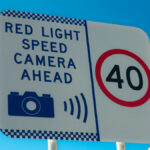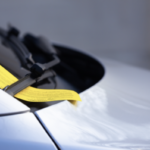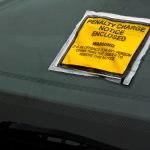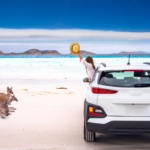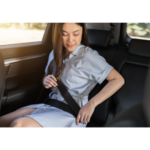When is it Illegal to Make a U-Turn in New South Wales?
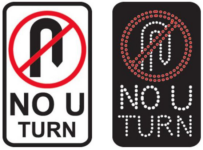
All of us believe we know the road rules, but the reality is they are very complex and it’s almost impossible to know each and every intricacy of all of them by heart.
One of the most misunderstood areas is a manoeuvre we perform regularly – the humble old U-turn.
Here’s a rundown of the rules that apply to performing U-turns on roads and road-related areas in New South Wales.
What is a U-turn?
The Road Rules 2014 (NSW) define a U-turn as:
A turn made by a driver so that the driver’s vehicle faces in approximately the opposite direction from which it was facing immediately before the turn was made, but does not include a turn made at a roundabout.
U-turns are generally legal to perform, but there are circumstances whereby the manoeuvre can amount to a traffic offence.
Here is a summary of the rules that apply to making U-turns in New South Wales.
Drivers must give way when making a U-turn
Regulation 38 of the Road Rules provides as follows:
A driver making a U-turn must give way to all vehicles and pedestrians.
Note : For this rule, “give way” means the driver must slow down and, if necessary stop, to avoid a collision.
The offence currently carries a penalty notice $302 and 2 demerit points, or maximum penalty of 10 penalty units, which is equivalent to $2,200 at the time of writing if an election is made to take the matter to court.
A driver must therefore make sure they have a clear view before beginning a U-turn and can begin the manoeuvre without unreasonably obstructing the free movement of traffic.
They must also give way to other road users, unless another driver is entering the road after the U-turn has already commenced, in which case that driver is required to give way.
Drivers must comply with ‘no U-turn’ signs
You must never conduct a U-turn where there is clear ‘no U-turn’ signage.
This is a general offence under regulation 39 of the Rules for not complying with a ‘no U-turn’ sign, which provides as follows:
(1) A driver must not make a U-turn at a break in a dividing strip on a road if there is a no U-turn sign at the break in the dividing strip.
(2) A driver must not make a U-turn on a length of road to which a no U-turn sign applies.
(3) A no U-turn sign on a road (except a no U-turn sign at an intersection or at a break in a dividing strip) applies to the length of road beginning at the sign and ending at the nearer of the following (a) the next intersection on the road, (b) if the road ends at a T-intersection or dead end—the end of the road
This offence also comes with a penalty notice of $302 and 2 demerit points, or a maximum penalty of $2,200 where a person chooses to take the matter to court..
A further offence is outlined under Regulation 41 of the Road Rules for not complying with a ‘no U-turn’ sign at an intersection (other than at traffic lights). The Regulation states as follows:
A driver must not make a U-turn at an intersection without traffic lights if there is a no U-turn sign at the intersection.
This offence comes with the same penalties.
Drivers must not make U-turns at certain places unless expressly allowed
Regulation 43 makes clear there are certain places where it is an offence to make a U-turn unless signage expressly allows this.
The Regulation states:
A driver must not make a U-turn at any of the following crossings, with or without traffic lights, unless there is a U-turn permitted sign at the crossing –
(a) children’s crossing,
(b) level crossing,
(c) marked foot crossing,
(d) pedestrian crossing.
Again, This offence also comes with a penalty notice of $302 and 2 demerit points, or a maximum penalty of $2,200 where a person chooses to take the matter to court..
Drivers must not make a U-turn at traffic lights unless expressly allowed
Regulation 43A provides that a driver is not permitted to make a U-turn at traffic lights where a road and road related area intersect, unless signage allows.
The Regulation states:
A driver must not make a U-turn at a place with traffic lights where a road and road related area intersect unless there is a U-turn permitted sign at the place.
This offence carries a maximum penalty of a fine of $2,200 if taken to court, or a penalty of $302 and 2 demerit points (generally) or $387 or 3 demerit points if it occurs in a school zone during school zone hours.
Drivers must start a U-turn at an intersection safely
Regulation 42 of the Road Rules makes clear a driver must start the U-turn safely, providing that:
A driver making a U-turn at an intersection must start the U-turn—
(a) if the road where the driver is turning has a dividing line or median strip—from the marked lane nearest, or as near as practicable, to the dividing line or median strip, or
(b) in any other case—from the left of the centre of the road.
Breaking this rule comes with a penalty notice of $302 and 2 demerit points, or a maximum fine of $2,200 if taken to court
What is a road related area?
The rules apply to roads as well as road related areas, the latter of which is defined in Regulation 13(1) as:
(a) an area that divides a road,
(b) a footpath or nature strip adjacent to a road,
(c) an area that is not a road and that is open to the public and designated for use by cyclists or animals,
(d) an area that is not a road and that is open to or used by the public for driving, riding or parking vehicles.
What about other states and territories?
While the focus of this article has been New South Wales, it is important to be aware the Road Rules are almost identical across all Australian states or territories, which is why they are sometimes called the uniform road rules.
The outlined rules relating to U-turns apply equally in all states and territories.
Challenging an illegal U-turn allegation
It is important to be aware that the onus rests on the prosecution to prove any illegal U-turn allegation beyond a reasonable doubt.
That being so, those who believe that were on the right side of the law can apply for a review or, if this is refused, elect (choose) to take the matter to court and put the prosecution to proof; in other words, make them prove the allegations.
Additional arguments put forth in court when defending such allegations include:
- The offence did not occur as alleged, or at all,
- Someone else was driving the car when the U-turn violation occurred (misidentification),
- The signage regarding U-turns was confusing, illegible or difficult to see,
- The penalty notice is invalid, due to an error in or insufficiency of material particulars, and/or
- An emergency justified the violation or the conduct occurred as a result of being threatened with imminent serious harm.
It is important to carefully consider whether to elect to take a penalty notice to court, as it can result in a harsher penalty than that which comes with the penalty notice.
That said, a court also has discretion to deal with the matter by way of a non-conviction order such as a section 10 dismissal in the event you wish to plead guilty or are found guilty and seek leniency.
Getting a non-conviction order means there is no fine or demerit points.
Going to court over a traffic offence?
If you are you going to court to contest a traffic offence, call Sydney Criminal Lawyers anytime on 9261 8881 to arrange a free first conference during which one of our experienced traffic lawyers will assess the case, advise you of your options and the best way forward, and fight for the optimal outcome.

